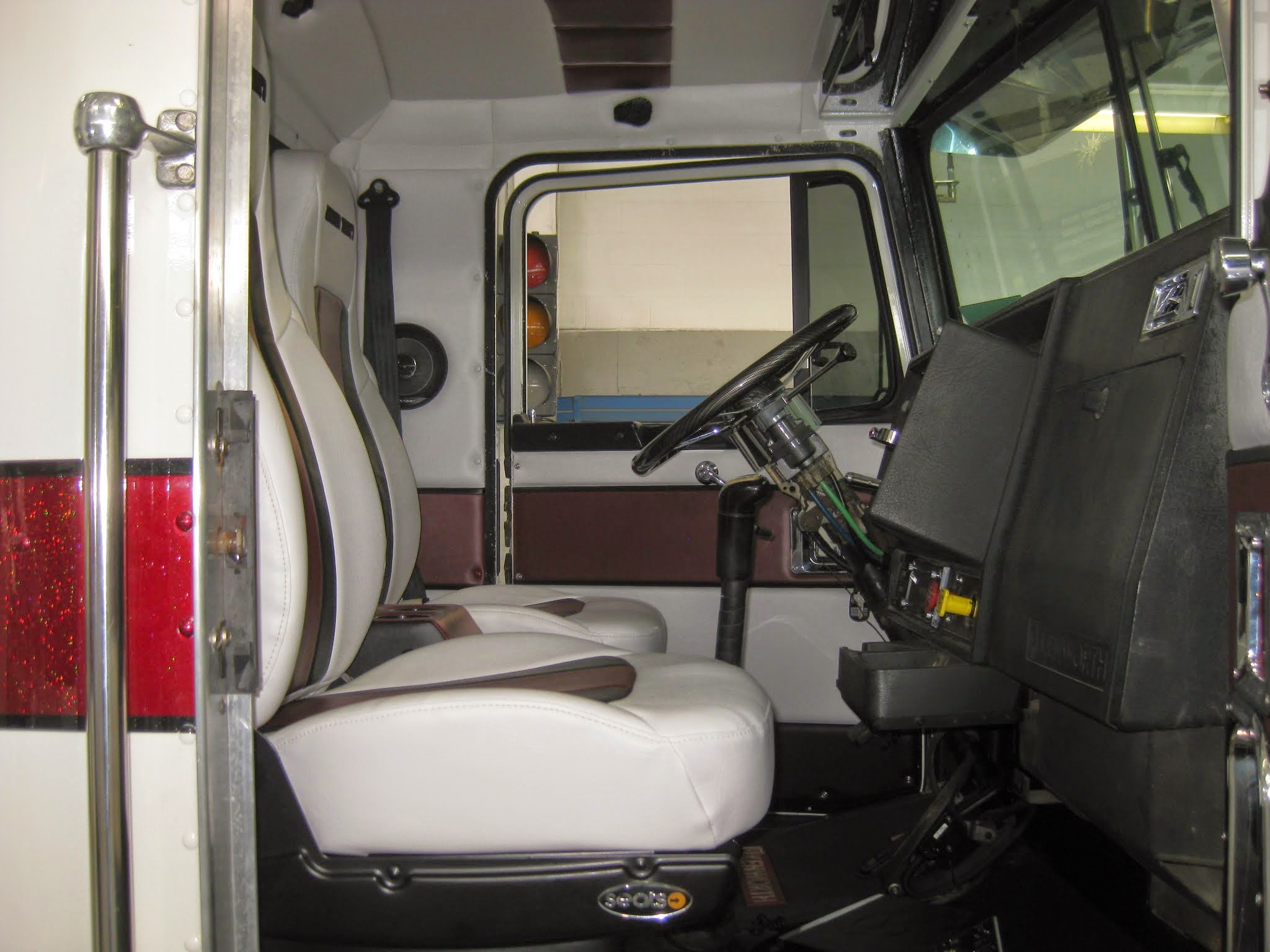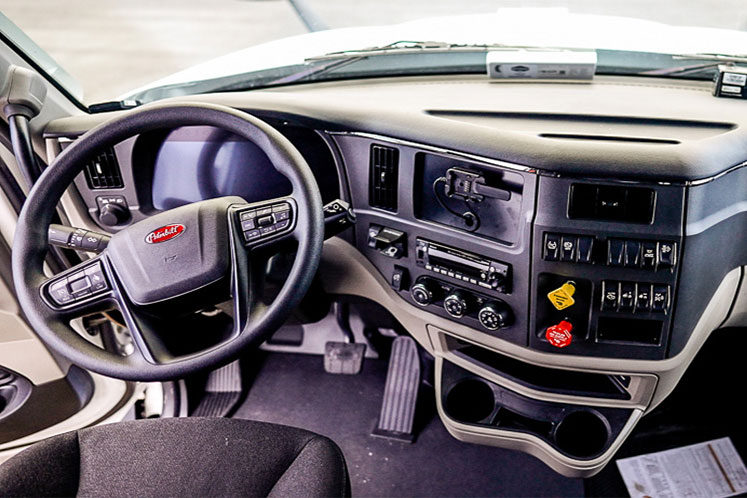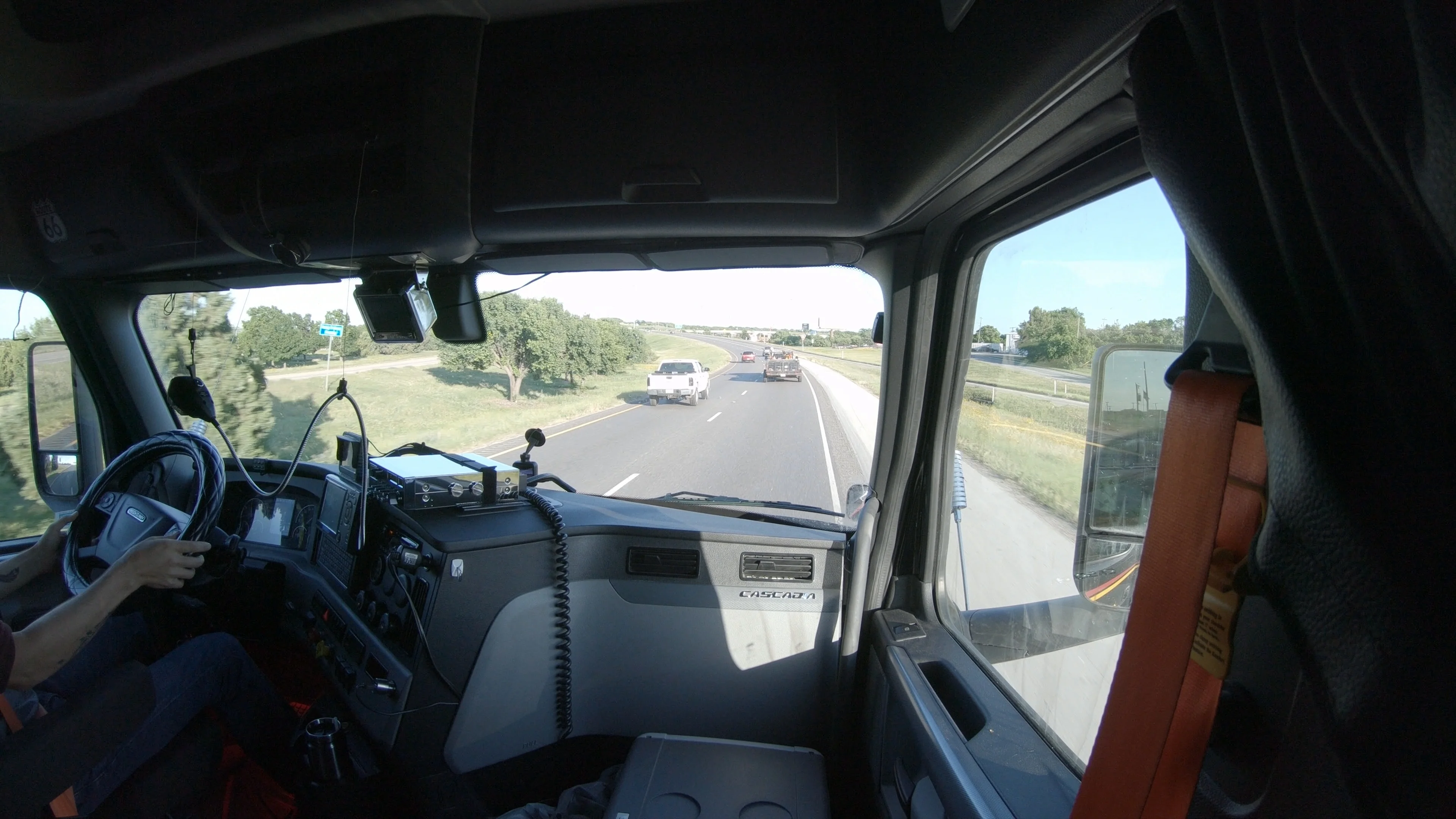Semi Truck Inside: Your Mobile Command Center and Home Away From Home
Semi Truck Inside: Your Mobile Command Center and Home Away From Home cars.truckstrend.com
The image of a semi-truck often conjures thoughts of powerful engines, massive trailers, and endless highways. But what truly defines the daily life of the professional truck driver, the unsung hero of our supply chain, is the "Semi Truck Inside" – the cab itself. Far more than just a cockpit, the interior of a semi-truck is a meticulously designed space that serves as a driver’s office, living room, bedroom, and even kitchen, all rolled into one compact, mobile unit. Understanding the intricacies of this internal world is crucial, not just for drivers, but for anyone seeking to appreciate the dedication and adaptability required for life on the road.
This article delves deep into the multifaceted environment of the semi-truck interior, exploring its vital components, the evolution of its design, and the critical role it plays in driver comfort, safety, and efficiency. From the ergonomic layout of the dashboard to the surprisingly well-appointed sleeper compartments, we will navigate the essential elements that transform a powerful machine into a habitable home on wheels.
Semi Truck Inside: Your Mobile Command Center and Home Away From Home
The Driver’s Command Center: The Cockpit
At the heart of every semi-truck’s interior is the cockpit – the nerve center from which the driver commands the colossal vehicle. This area is a masterclass in functional design, prioritizing ergonomics, visibility, and accessibility to controls.
Key Features and Design Philosophy:
- Ergonomic Seating: The driver’s seat is arguably the most critical component. Modern semi-truck seats are often air-ride suspended, highly adjustable (lumbar support, armrests, tilt, recline), and designed to mitigate fatigue over long hours. Comfort here directly translates to driver alertness and safety.
- Dashboard and Instrumentation: A well-laid-out dashboard provides immediate access to vital information: speed, RPMs, fuel levels, oil pressure, air brake pressure, and various warning lights. Digital displays are increasingly common, offering customizable layouts and integration with navigation and telematics systems.
- Controls and Switches: Every switch, knob, and lever is positioned for intuitive reach. This includes controls for lights, wipers, HVAC (heating, ventilation, and air conditioning), mirrors (often heated and power-adjustable), cruise control, and differential locks. The gear shifter, whether manual or automated, is also strategically placed.
- Steering Wheel: Beyond its primary function, the steering wheel often houses controls for cruise control, audio, phone calls, and even menu navigation for the dashboard display, minimizing the need for drivers to take their hands off the wheel.
- Pedals: The accelerator, brake, and clutch (in manual transmissions) are robust and designed for precise control, often with non-slip surfaces.
- Visibility: Large windshields, expansive side windows, and multiple mirrors (including convex spot mirrors) are crucial for maximizing the driver’s field of vision, essential for maneuvering and safety.

Technological Integration:
Modern cockpits are increasingly technologically advanced. Electronic Logging Devices (ELDs) are standard for tracking hours of service. GPS navigation systems, often truck-specific to account for bridge heights and weight limits, are indispensable. Infotainment systems provide radio, satellite radio, Bluetooth connectivity, and sometimes even TV tuners. Advanced Driver-Assistance Systems (ADAS) like lane departure warning, collision mitigation, adaptive cruise control, and blind-spot monitoring are becoming common, enhancing safety and reducing driver strain.

Life on the Road: The Sleeper Cab
For long-haul truckers, the sleeper cab is their home away from home, a crucial space for rest, relaxation, and personal well-being. The size and amenities of sleeper cabs vary significantly, categorized primarily by their roof height and length.
Types of Sleeper Cabs:
- Day Cabs: These trucks have no sleeper compartment and are used for local or regional routes where drivers return home daily.
- Mid-Roof Sleepers: Offering a modest amount of standing room, these sleepers provide a bed, some storage, and basic amenities. They are a good balance for drivers who need to pass under lower clearances.
- Raised-Roof (or High-Rise) Sleepers: These are the most spacious, offering ample standing room, larger beds, and significantly more storage and amenities. They are preferred by long-haul drivers who spend extended periods on the road.

Essential Sleeper Cab Amenities:
- Bedding: A comfortable mattress is paramount. Many drivers upgrade from standard factory mattresses to memory foam or custom-designed options for better sleep quality.
- Storage: Cleverly designed cabinets, overhead compartments, drawers, and under-bunk storage are essential for clothes, food, personal items, and supplies.
- Appliances: Most long-haul sleepers include a compact refrigerator/freezer, a microwave oven, and often a small counter space for meal preparation. Some even have coffee makers or slow cookers.
- Power Sources: To run appliances and electronics, trucks are equipped with power inverters (converting 12V DC to 120V AC) and often Auxiliary Power Units (APUs). APUs are small, independent engines that power the cab’s HVAC, lights, and outlets without idling the main truck engine, saving fuel and reducing wear.
- Entertainment: Flat-screen TVs, DVD players, and gaming consoles are common, providing a much-needed escape during downtime. Satellite TV and Wi-Fi boosters are also popular additions.
- Climate Control: Effective heating and air conditioning are vital for comfort in all weather conditions. APUs play a significant role here, maintaining a comfortable temperature without excessive fuel consumption.
Importance for Driver Welfare:
A well-appointed and comfortable sleeper cab directly impacts driver health, morale, and retention. Adequate rest is critical for safety, preventing fatigue-related accidents. The ability to prepare meals, stay entertained, and have a private space contributes significantly to a driver’s quality of life on the road, reducing burnout and encouraging longevity in the profession.
Optimizing Your Mobile Home: Customization and Organization
Given the limited space, effective organization and thoughtful customization are key to making a semi-truck interior truly functional and comfortable.
- Smart Storage Solutions: Beyond factory-installed cabinets, drivers often add hanging organizers, collapsible bins, under-bunk drawers, and custom shelving to maximize every inch of space.
- Personal Touches: To combat the sterile feel of a commercial vehicle, drivers often personalize their space with photos, decorative lighting, throws, and unique decor that makes the cab feel more like home.
- Cleanliness and Hygiene: Maintaining a clean interior is crucial for health and morale. Portable vacuums, cleaning wipes, and air fresheners are standard equipment. Many trucks also have small sinks or hand-washing stations, and public truck stops provide showers and laundry facilities.
- Maximizing Space: Vertical storage, multi-purpose items (e.g., an ottoman with storage), and fold-away tables are excellent ways to make the most of the compact environment.
Beyond Comfort: Safety and Technology Integration
The interior of a semi-truck isn’t just about comfort; it’s a critical component of driver safety and operational efficiency.
- Advanced Driver-Assistance Systems (ADAS): As mentioned, these systems are integrated into the cockpit, providing alerts and assistance to prevent accidents. Cameras for blind spots and dash cams for recording incidents are also common.
- Communication Systems: CB radios remain popular for driver-to-driver communication, especially in remote areas. Cell phone boosters ensure connectivity, and often, in-cab Wi-Fi systems are available for internet access.
- Security: Locks on doors, windows, and even internal compartments, along with alarm systems, provide peace of mind for drivers when they are away from their truck or sleeping.
- Emergency Equipment: The cab also houses essential safety equipment like fire extinguishers, first-aid kits, reflective triangles, and emergency tools, all within easy reach.
Challenges and Solutions Inside the Cab
Life in a semi-truck cab comes with its unique set of challenges, but drivers and manufacturers have developed ingenious solutions.
- Limited Space:
- Solution: Vertical storage, multi-functional furniture, meticulous organization, and minimalist packing.
- Noise and Vibrations:
- Solution: Enhanced cab insulation, noise-canceling headphones, and strategic placement of sound-dampening materials.
- Temperature Control:
- Solution: Robust HVAC systems, APUs for climate control without idling, window coverings for insulation, and portable fans/heaters.
- Power Management:
- Solution: High-capacity power inverters, multiple charging ports, efficient LED lighting, and reliance on APUs to conserve main engine battery.
- Hygiene and Waste Management:
- Solution: Regular cleaning, portable waste bins, access to truck stop facilities for showers and laundry, and sometimes portable toilets for emergencies.
- Loneliness/Isolation:
- Solution: Communication with family/friends via phone/video calls, engaging with other drivers at truck stops, entertainment systems, and pet companionship (where allowed by company policy).
Cost Considerations for Semi Truck Interior Upgrades & Essentials
While the "Semi Truck Inside" is an inherent part of the vehicle, optimizing it often involves additional investments. Here’s an estimated price range for common interior upgrades and essentials. Prices can vary significantly based on brand, quality, features, and installation costs.
| Item/Upgrade | Estimated Price Range (USD) | Description |
|---|---|---|
| Ergonomic Air-Ride Seat Upgrade | $1,000 – $3,500 | Enhanced comfort, adjustability, and lumbar support for long hours. |
| Compact Refrigerator/Freezer | $300 – $800 | Essential for storing food and drinks. |
| Microwave Oven (Truck Specific) | $100 – $300 | For heating meals. |
| Power Inverter (1500W-3000W) | $150 – $600 | Converts 12V DC to 120V AC for household appliances. |
| Auxiliary Power Unit (APU) | $8,000 – $15,000+ | Provides power and climate control without idling the main engine. |
| Custom Mattress | $400 – $1,200 | Memory foam or custom spring mattress for better sleep quality. |
| Dash Camera (Front & Rear) | $100 – $400 | For safety, incident recording, and insurance purposes. |
| Portable Toilet (Camping Style) | $50 – $200 | For emergencies when facilities are unavailable. |
| Satellite TV System | $500 – $1,500+ | Dish and receiver for entertainment on the road. |
| Wi-Fi Hotspot/Booster | $100 – $500 (plus data plan) | Ensures reliable internet connectivity. |
| Portable Vacuum Cleaner | $50 – $150 | For maintaining cleanliness. |
| Interior LED Lighting Kit | $50 – $200 | Energy-efficient and customizable lighting. |
| Premium Floor Mats | $50 – $200 | Protects flooring and provides better grip. |
| Storage Organizers (Bins/Bags) | $20 – $100+ | Various solutions for maximizing storage space. |
Note: Prices are estimates and can fluctuate based on brand, features, and market conditions. Installation costs for items like APUs and larger inverters are often separate.
Frequently Asked Questions (FAQ) about Semi Truck Interiors
Q1: What’s the main difference between a day cab and a sleeper cab?
A1: A day cab has no integrated living/sleeping area and is typically used for shorter, local routes where the driver returns home daily. A sleeper cab includes a bunk and amenities for resting, designed for long-haul routes requiring overnight stays.
Q2: How do truck drivers power their appliances like microwaves and refrigerators?
A2: They primarily use a power inverter, which converts the truck’s 12-volt DC power into 120-volt AC power, similar to household outlets. For extended periods, many also use an Auxiliary Power Unit (APU) which is a small, independent engine that powers the cab’s electrical systems and HVAC without needing to idle the main truck engine.
Q3: What are some essential items every truck driver should have inside their cab?
A3: Essentials include comfortable bedding, a compact refrigerator, microwave, power inverter, a good GPS system, an ELD, cleaning supplies, first-aid kit, emergency tools, and personal hygiene items. Many also consider a dash cam and a portable vacuum essential.
Q4: How do drivers maintain hygiene on the road?
A4: Truck stops are equipped with shower facilities and laundry rooms. Drivers also utilize portable water tanks, wet wipes, and hand sanitizers for quick clean-ups in the cab. Some trucks have small sinks or integrated hand-washing stations.
Q5: Can drivers customize the interior of their semi-truck?
A5: Absolutely! Most drivers personalize their cabs to make them feel more like home. This can include upgrading seats and mattresses, adding custom lighting, installing personal decor, and setting up advanced entertainment systems. However, company trucks may have limitations on major structural modifications.
Q6: What is an APU and why is it important for truck drivers?
A6: An Auxiliary Power Unit (APU) is a small engine that runs independently of the truck’s main engine. It provides power for the cab’s HVAC system, lights, and electrical outlets, allowing drivers to stay comfortable without idling the large, fuel-guzzling main engine. This saves fuel, reduces engine wear, lowers emissions, and complies with anti-idling regulations.
Conclusion
The "Semi Truck Inside" is a testament to ingenious design and the resilience of the human spirit. It is a highly specialized environment that balances the demands of a mobile workspace with the comforts of a personal living space. For the dedicated individuals who spend countless hours traversing our nation’s highways, this interior is more than just a cab; it is their sanctuary, their office, and their home. Understanding its components, the challenges it presents, and the innovative solutions employed helps us appreciate the intricate world of trucking and the vital role drivers play in our daily lives. As technology advances, the semi-truck interior will continue to evolve, offering even greater levels of comfort, safety, and connectivity, further enhancing the lives of those who keep our world moving.






